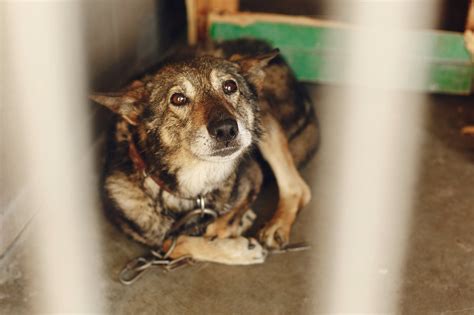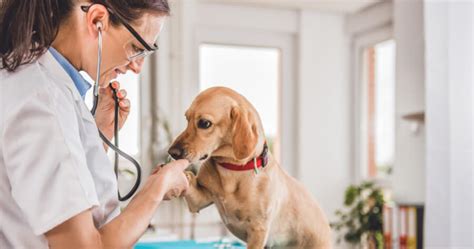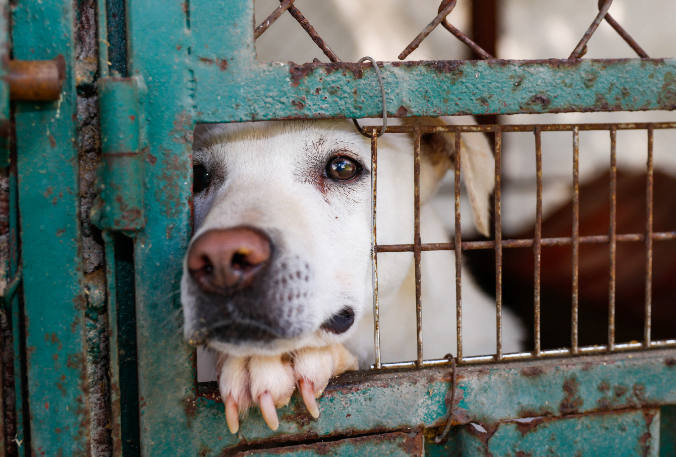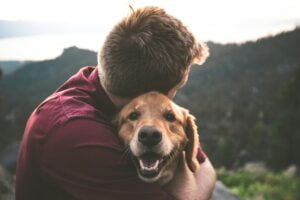Introduction
Imagine opening your home to a dog with a mysterious past, one that might be filled with moments of neglect, mistreatment, or even outright abuse. It’s a brave and compassionate decision, one that speaks volumes about your kindness and willingness to make a difference. These dogs, with their unknown histories, come with stories written in their eyes – stories of fear, mistrust, and sometimes, hope.
Taking on the responsibility of rehabilitating an abused dog is no small
feat. It’s a journey filled with challenges, but also immense rewards. Every wag of their tail, every moment they lean into you for comfort, is a testament to the resilience of their spirit and the healing power of love. But, as you embark on this journey, it’s essential to understand that the road to recovery can be long and winding. The scars, both visible and hidden, might take time to heal. But with patience, understanding, and unwavering commitment, you can help rewrite their story, turning pages filled with pain into chapters of love, trust, and newfound joy.

Understanding the Behavior of Abused Dogs
When you welcome an abused dog into your life, it’s like inviting in a puzzle with many pieces missing. Their behaviors, often shaped by traumatic experiences, can be challenging to understand at first. But with patience and empathy, you can begin to see the world through their eyes and help them navigate their fears and anxieties.
- Fear of Unknown People and Dogs: It’s heartbreaking to think that a creature as loving as a dog could be so deeply scarred by past experiences that they view every new face with suspicion. This fear isn’t a reflection of their new environment but a protective mechanism built from past traumas. They might cower, whimper, or try to hide when confronted with unfamiliar faces. It’s essential to introduce them to new people and pets gradually, ensuring each experience is positive and non-threatening.
- Aggression Tendencies: Aggression in abused dogs often stems from a place of fear or the need to defend themselves. It’s not that they want to be aggressive; it’s that they’ve learned it as a means of survival. Recognizing the triggers, whether it’s a specific action or a particular object, can help in managing and eventually reducing this behavior.
- Excitability and Hyperactivity: Some dogs react to their past traumas by becoming overly excitable. This hyperactivity can be their way of coping, a burst of energy to mask their underlying anxieties. Providing them with regular exercise, playtime, and training can help channel this energy positively.
- Separation Anxiety Issues: Imagine being abandoned or neglected and then finally finding a loving home. The fear of losing that newfound safety can manifest as separation anxiety. They might become distressed when you leave, exhibiting behaviors like whining, barking, or even destructive actions. Consistent routines and gradual training can help alleviate this anxiety over time.
- Attention-Seeking Behavior: After facing neglect or isolation, it’s only natural for a dog to crave attention and affection. They might become clingy, always wanting to be by your side or engaging in behaviors to get your attention. While it’s essential to provide them with the love they crave, it’s also crucial to teach them independence and confidence.
- Repetitive or Compulsive Behaviors: Trauma can lead some dogs to develop repetitive actions, like tail-chasing or excessive licking. These behaviors can be their way of self-soothing. It’s vital to recognize these signs and consult with a veterinarian or behaviorist to address the root causes.
- Lifelong Medical Management: Unfortunately, some abused dogs come with physical scars that require ongoing medical attention. Whether it’s a limp from an old injury or a chronic condition, it’s essential to be prepared for regular vet visits and potential treatments. Remember, with your love and care, these dogs can still lead happy, fulfilling lives.
Understanding the behaviors of abused dogs is the first step in their journey to recovery. With your compassion, patience, and dedication, you can help them overcome their past and embrace a brighter, love-filled future.
Creating a Safe Environment for Recovery
Every living being, whether human or animal, craves a sanctuary—a place where they feel secure, loved, and at peace. For abused dogs, who have faced traumas and uncertainties, this need is even more profound. Creating a safe environment is not just about physical safety; it’s about emotional healing, a place where they can let their guard down and truly begin to recover.
- The Significance of a Safe Space: Just as we humans need a quiet corner to retreat to after a long day, abused dogs need a space where they can feel protected from potential threats. This space becomes their anchor, a constant in a world that might have previously been chaotic and unpredictable. It’s a place where they can start rebuilding their trust in the world around them.
- Setting Up a Safe Haven: Crafting the perfect sanctuary for your furry friend involves more than just a cozy bed. Here are some recommendations to consider:
- Choosing a Quiet Location: The hustle and bustle of daily life can be overwhelming for a traumatized dog. A quiet spot, away from the frequent foot traffic or loud noises, can provide them the tranquility they need to relax.
- Using Comfortable Bedding: Think soft, plush, and warm. The bedding should be inviting, a place where they can snuggle in and feel enveloped in comfort. Remember, this might be the first time they’ve had something soft to lie on.
- Restricting Access: While it’s essential for the dog to integrate with the family, their safe space should be off-limits to strangers and young children. This ensures that they always have a retreat where they won’t be startled or overwhelmed.
- Associating the Space with Positive Experiences: Introduce them to this space with gentle encouragement. Maybe a treat or their favorite toy can be placed there, making the association that this is a place of good things.
The Magic of Pheromone Diffusers: Science has given us a tool to further enhance this safe environment. Pheromone diffusers release synthetic versions of the dog-appeasing pheromones, which can have a calming effect on anxious or stressed dogs. Placing one in or near their safe space can amplify the feelings of security and calm.
Creating a nurturing environment is one of the most significant gifts you can give to an abused dog. It’s more than just a physical space; it’s a promise. A promise that they are finally safe, that the horrors of their past are behind them, and that they have a loving, caring future ahead.

Enhancing Communication with Your Dog
Communication is the foundation of any relationship, and the bond between you and your dog is no exception. While our furry friends might not speak our language, they have a rich vocabulary of their own, expressed through their body language, sounds, and behaviors. Understanding this language, especially for a dog with a traumatic past, is crucial in building trust, ensuring their well-being, and forging a deep, lasting connection.
- The Art of Dog Body Language: Dogs are incredibly expressive creatures. Every wag of their tail, tilt of their head, or prickle of their fur tells a story. By learning to interpret these subtle cues, you can gain insights into their emotions, needs, and concerns. For instance, a tucked tail might indicate fear, while a relaxed, wagging tail often signals happiness. Ears pinned back can be a sign of anxiety, while a playful bow is an invitation to play. By understanding these signals, you can respond to their needs more effectively, ensuring they feel heard and understood.
- Recognizing Signs of Fear and Discomfort: For abused dogs, certain triggers can bring back memories of their traumatic past. It could be a loud noise, a sudden movement, or even a specific object. Recognizing the signs of distress is vital. Look for behaviors like excessive panting, dilated pupils, or trembling. They might also become more clingy or try to hide. By identifying these signs early, you can take steps to comfort them, remove the trigger, or redirect their attention, ensuring they don’t remain in a state of distress.
- Honoring Their Choices and Boundaries: Just like humans, dogs have their boundaries. They might not be comfortable with strangers touching them or might be wary of certain situations. It’s essential to respect these boundaries and not force them into situations where they feel uncomfortable. For instance, if they seem hesitant to approach a new person, don’t push them. Allow them to take their time, approach at their own pace, and decide when they’re ready. By respecting their choices, you reinforce the idea that they are in a safe environment where their feelings and boundaries are valued.
In essence, enhancing communication with your dog is about empathy, observation, and respect. It’s about listening with your eyes and heart, understanding their silent language, and responding with love and patience. Through this deepened communication, you pave the way for a bond that is built on trust, understanding, and mutual respect.
Safety Precautions Around Children
Children and dogs can share a bond that’s truly magical. Their innocent play, shared laughter, and mutual affection can warm any heart. However, when it comes to abused dogs, extra care and precautions are essential to ensure the safety of both the child and the dog. Abused dogs might have triggers or fears that children, with their unpredictable movements and loud noises, could unintentionally activate.
- Understanding the Dog’s Past: Before introducing an abused dog to children, it’s crucial to have some understanding of the dog’s history. Were they mistreated by a child in their past? Do they have specific triggers related to children’s toys or sounds? Knowing these can help in preparing both the child and the dog for their first interaction.
- Educating the Children: Children, especially younger ones, might not understand the concept of boundaries or that their new furry friend might have had a traumatic past. It’s essential to educate them about gentle touch, the importance of not startling the dog, and recognizing signs of distress or discomfort in the dog. Teach them to approach the dog slowly, avoid direct eye contact initially, and always let the dog come to them.
- Supervised Interactions: Never leave an abused dog alone with a child, especially during their initial interactions. Always be present to supervise, guide, and intervene if necessary. This ensures that the child doesn’t accidentally harm or scare the dog and that the dog doesn’t react out of fear or defense.
- Safe Zones for the Dog: Ensure that the dog has a designated safe space where they can retreat if they feel overwhelmed. This space should be off-limits to children, allowing the dog a sanctuary where they can relax and feel secure.
- Recognizing and Respecting Signs of Discomfort: Dogs will often show signs when they are uncomfortable. This could be subtle cues like yawning, licking their lips, or more evident signs like growling or baring their teeth. It’s crucial for adults to recognize these signs and intervene immediately, ensuring the situation doesn’t escalate.
- Gradual Introduction: Start with short, controlled interactions between the child and the dog, gradually increasing the time they spend together as they become more accustomed to each other. This allows both the child and the dog to build trust and understanding at a comfortable pace.
Ensuring safety precautions around children is not just about preventing potential harm; it’s about building a foundation of trust, understanding, and mutual respect. With patience, guidance, and vigilance, children and abused dogs can form a bond that’s both healing and enriching for both parties.
Promoting Positive Reinforcement
In the world of dog training and rehabilitation, the approach you choose can make all the difference. Positive reinforcement, a method that rewards desired behaviors, stands as a beacon of hope and effectiveness, especially for dogs with traumatic pasts. By focusing on encouragement and rewards, rather than punishment, you can build a foundation of trust, mutual respect, and understanding with your furry friend.
- The American Veterinary Society of Animal Behavior’s Perspective: The American Veterinary Society of Animal Behavior (AVSAB) strongly advocates for humane dog training methods. They emphasize that training should be an enjoyable and positive experience for both the dog and the owner. According to AVSAB, reward-based methods are not only more humane but also more effective in fostering desired behaviors in dogs. They discourage the use of techniques that instill fear or pain in animals, as these can lead to increased aggression and behavioral issues.
- The Power of Reward-Based Training: Imagine being in a foreign country, trying to understand a new language. Would you prefer someone who shouts at you every time you make a mistake or someone who patiently guides you and celebrates your successes? Dogs, too, thrive in an environment where they are rewarded for their achievements. Treats, praises, or even a simple pat can motivate them, making the learning process enjoyable and stress-free. Over time, this positive association strengthens, making desired behaviors more consistent.
- The Dangers of Aversive Training Methods: On the flip side, aversive training methods, which rely on punishment or negative consequences, can be detrimental. Not only do they instill fear and distrust in the dog, but they can also exacerbate behavioral issues, especially in dogs with traumatic backgrounds. Techniques like shock collars, prong collars, or physical punishment can lead to increased aggression, anxiety, and fear. Moreover, they can damage the bond between the owner and the dog, making rehabilitation even more challenging.
- Building Trust Through Positive Reinforcement: Trust is the cornerstone of any relationship, and it’s no different with our canine companions. Every time you reward your dog for a job well done, you’re sending a clear message: “I see you, I appreciate you, and I’m proud of you.” This consistent positive feedback builds a foundation of trust. For abused dogs, this trust is healing. It reassures them that they are in a safe environment, where they are valued and loved.
In conclusion, promoting positive reinforcement is more than just a training technique; it’s a philosophy, a commitment to understanding, love, and respect. By choosing this path, you’re not only ensuring effective training but also fostering a bond that’s built on trust, patience, and mutual respect.
Seeking Professional Assistance
While our love and dedication for our furry companions are boundless, there are times when the complexities of their behaviors, especially in abused dogs, require a more expert touch. Seeking the guidance of a certified professional trainer can be a game-changer in the rehabilitation journey, providing insights, techniques, and support that can make the path to recovery smoother and more effective.
- The Merits of a Certified Professional Trainer: Engaging with a certified professional trainer offers a plethora of advantages:
- Expertise: These trainers have undergone rigorous training and have a wealth of experience dealing with a variety of canine behaviors. Their knowledge can provide tailored solutions that cater specifically to your dog’s needs.
- Structured Training: A professional can provide a structured training regimen, ensuring consistency, which is vital for effective learning and behavior modification.
- Objective Perspective: Sometimes, being too close to a situation can cloud judgment. A trainer, with their objective standpoint, can identify issues or triggers that might be overlooked by a loving pet owner.
- Unraveling the Mystery of Triggers: Abused dogs often come with a set of triggers—specific stimuli that evoke strong negative reactions. A professional trainer can help identify these triggers, be it a particular sound, action, or object. Once identified, trainers can then work on desensitizing the dog to these triggers and shaping more positive behaviors in response.
- Crafting Positive Experiences: At the heart of rehabilitation is the creation of positive experiences that overshadow past traumas. A professional trainer, with their arsenal of techniques and tools, can curate experiences that not only teach the dog desired behaviors but also instill confidence and trust. Each successful interaction, each reward, and each moment of understanding further cements the bond between the dog and its owner.
- Finding the Right Fit: Not all trainers are created equal, especially when it comes to rehabilitating abused dogs. It’s crucial to find someone who has specific experience and understanding in this area. Recommendations can come from veterinarians, local animal shelters, or even online forums dedicated to dog rehabilitation. When meeting potential trainers, it’s essential to ask about their experience with abused dogs, their training philosophy, and methods. Observing a training session can also provide insights into their approach and compatibility with your dog’s needs.
In essence, seeking professional assistance is an investment in your dog’s future. It’s about harnessing expertise, experience, and empathy to craft a tailored rehabilitation journey—one that transforms the scars of the past into stepping stones for a brighter, happier future.
Collaborating with a Fear-Free Veterinarian
The journey of rehabilitating an abused dog is multifaceted, involving not just emotional and behavioral healing but also addressing physical health. Veterinarians play a pivotal role in this process, ensuring that the dog’s physical well-being is catered to. However, for dogs with traumatic pasts, traditional veterinary visits can be stressful. This is where the concept of a “fear-free” veterinarian comes into play, offering a more compassionate approach to veterinary care.
- Veterinarians: The Unsung Heroes of Rehabilitation: While trainers and behaviorists address the emotional and behavioral aspects of rehabilitation, veterinarians tackle the physical. They assess the dog’s overall health, address injuries or illnesses, and provide recommendations for ongoing care. Their expertise ensures that the dog’s physical well-being complements the emotional healing, creating a holistic approach to rehabilitation.
- The Fear-Free Certification:A Game Changer: The fear-free certification is a relatively new movement in veterinary medicine, focusing on reducing the stress and anxiety associated with veterinary visits. Veterinarians with this certification undergo specialized training to understand and address the unique fears and anxieties pets might have. The benefits include:
- Reduced Stress: Techniques like gentle handling, calming environments, and even sedation when necessary, ensure that the dog’s stress levels are minimized during visits.
- Improved Diagnosis: A calm and relaxed dog allows for a more accurate examination, ensuring that no health issues are overlooked.
- Strengthened Bond: Positive veterinary experiences can reinforce the dog’s trust in humans, further aiding the rehabilitation process.
- Finding the Right Fear-Free Veterinarian: If you believe that a fear-free approach is right for your dog, it’s essential to find a veterinarian with the appropriate certification and experience. Here are some recommendations:
- Certification Bodies: Organizations like the Fear Free Pets initiative maintain directories of certified professionals. These can be a great starting point in your search.
- Ask Around: Local animal shelters, trainers, or even other pet owners might have recommendations or experiences to share.
- Initial Consultation: Before committing, consider scheduling an initial consultation. This allows you to gauge the veterinarian’s approach, the clinic’s environment, and how your dog reacts.
In conclusion, collaborating with a fear-free veterinarian is about prioritizing the dog’s emotional well-being alongside their physical health. It’s a compassionate approach, recognizing that for true healing to occur, both the body and the soul must be nurtured and cared for.

Considering Medication for Recovery
The path to recovery for an abused dog is often multifaceted, requiring a blend of behavioral training, environmental adjustments, and sometimes, medical intervention. Just as humans sometimes need medication to manage anxiety or depression, dogs too might benefit from medical solutions to help them cope with the traumas of their past. It’s essential to approach this avenue with knowledge, understanding, and collaboration.
- The Toll of Constant Fear: Living in a perpetual state of fear or anxiety can have profound effects on a dog’s overall well-being. Beyond the evident emotional distress, constant fear can lead to physical health issues, including digestive problems, weakened immune response, and even a reduced lifespan. Addressing this fear is not just about improving their quality of life but also ensuring their long-term health.
- Natural and Nutritional Aids: Before diving into prescription medications, there are several natural and nutritional options to consider:
- Pheromones: Synthetic pheromones, like the ones found in diffusers or sprays, can mimic the calming chemicals produced by mother dogs, providing a sense of comfort and security.
- Natural Supplements: Ingredients like chamomile, valerian root, and L-theanine can have calming effects on dogs, reducing anxiety and promoting relaxation.
- Calming Veterinary Food: Some specialized dog foods are formulated with ingredients that support calm behavior and balanced brain chemistry.
- Prescription Medications: A Potential Lifeline: For dogs with extreme fear or anxiety, prescription medications can be transformative. Drugs like fluoxetine or clomipramine can help regulate mood and reduce anxiety, allowing the dog to benefit more from training and rehabilitation efforts. It’s essential to understand that these medications are not a “quick fix” but rather a tool to be used in conjunction with other rehabilitation methods.
- Collaborative Approach with a Veterinarian: Medication, whether natural or prescription, should never be administered without the guidance of a veterinarian. They can provide insights into the best options for your dog, recommend dosages, and monitor for any potential side effects. Regular check-ins and adjustments might be necessary to ensure the medication remains effective and beneficial.
In conclusion, considering medication as a part of a dog’s recovery journey is about recognizing and addressing the profound impact of trauma on their mental and physical well-being. With the right approach, knowledge, and veterinary collaboration, medication can be a valuable tool in helping an abused dog find peace, comfort, and a renewed zest for life.

Conclusion
Embarking on the journey of adopting and rehabilitating an abused dog is akin to choosing a path less traveled. It’s a road filled with challenges, uncertainties, and moments of doubt. Yet, as with all profound journeys, the rewards far outweigh the trials. Every small step forward, every wag of the tail, every trusting gaze is a testament to the transformative power of love, patience, and dedication.
- The Joy of Second Chances: There’s an unparalleled joy in witnessing the metamorphosis of an abused dog. From a creature shrouded in fear and mistrust to a loving companion brimming with enthusiasm and gratitude, the transformation is nothing short of miraculous. It’s a reminder that, with love and care, even the deepest wounds can heal. By choosing to adopt and rehabilitate, you’re not just saving a life; you’re giving a soul a second chance at happiness.
- The Virtue of Patience and Understanding: Rehabilitation is not a sprint; it’s a marathon. There will be days of progress and days of setbacks. But it’s essential to remember that every dog heals at their own pace. What they need most from you is patience and understanding. Celebrate the small victories, be there for them during the tough times, and always remember that beneath their fears and anxieties lies a heart eager to love and be loved.
- The Wisdom in Seeking Help: No journey is undertaken alone. Along the way, there will be moments when you might feel overwhelmed or uncertain. It’s in these moments that the wisdom of seeking help shines brightest. Whether it’s consulting with a trainer, collaborating with a veterinarian, or simply connecting with a community of like-minded individuals, remember that there’s strength in numbers and wisdom in shared experiences.
In wrapping up, the journey of rehabilitating an abused dog is a testament to the resilience of the canine spirit and the boundless capacity of the human heart. It’s a dance of love, trust, and healing, where both the dog and the human emerge transformed, their lives enriched by the shared experience. It’s a reminder that, in the world of rescue and rehabilitation, love truly does conquer all.
Enjoyed reading this article? There’s plenty more where that came from! Check out our blog for more insightful articles and tips about your furry friends. Here are a few you might find interesting:
– Pet Friendly Hotels Near Lax Airport
– Top Organic Dog Foods of 2023: Nourishing Your Dog Naturally
– A Comprehensive Guide to Dog DNA Tests in 2023
– The Influence of Hollywood on Dog Fashion Trends
– The Aging Process: Understanding the Canine Brain
– Top 10 Dog Breeds Active Families
Keep exploring and learning with Trusty Paws!



